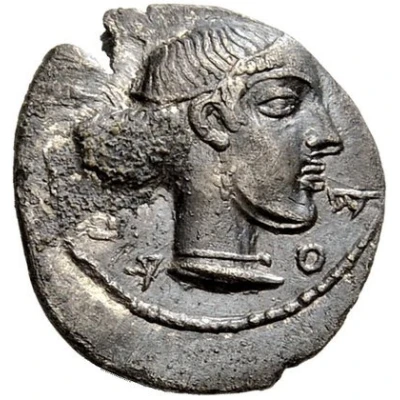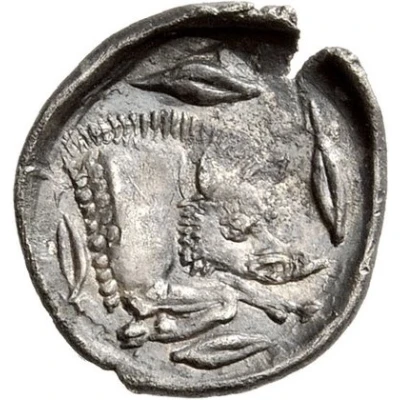


© Nomos AG
Litrai 450 BC
450 BC year| Silver | 0.75 g | - |
| Issuer | Uncertain Sicilian city (Sicily) |
|---|---|
| Type | Standard circulation coin |
| Year | 450 BC |
| Value | 1 Litra |
| Currency | Litra |
| Composition | Silver |
| Weight | 0.75 g |
| Shape | Round (irregular) |
| Technique | Hammered, Incuse |
| Demonetized | Yes |
| Updated | 2024-10-10 |
| Numista | N#182797 |
|---|---|
| Rarity index | 97% |
Reverse
Forepart of a boar to right, surrounded by four barley grains. All within shallow circular incuse
Comment
Note from Nomos AG:This coin is both exciting and infuriating: exciting, because it is clearly from a new Sicilian mint, and infuriating, because its inscription, which appears to read, retrograde and in archaic lettering, Boro makes no obvious sense! It would be reasonable to assume that this coin was an ancient imitation of some sort, based on coins produced by a major city (like the many crude imitations of Syracusan fractions, produced by the Sikels and others). However, the quality of the engraving of this coin precludes that possibility. The head of the goddess on the obverse is immediately reminiscent of that on some issues of Segesta, with issues of Syracuse, and with some heads of Apollo at Leontinoi; it can probably be dated around 450 (note the way the bun at the back of her head sticks straight out rather than down). As for the forepart of the boar on the reverse, it is is not only perfectly made but is otherwise unknown in Sicily and must have been specifically requested rather than simply copied; though the four wheat grains around it come directly from the tetradrachms of Leontinoi. Thus, the possibility that this coin was struck by a small town in the area of Leontinoi, and under that city’s influence, seems reasonable. Unfortunately, no such town or tribal grouping - with these four letters in its name - appears to be known. As has been said before, this is a coin that deserves further research
Interesting fact
The Litrai coin was used as a form of currency in ancient Sicily and was equivalent to one-third of a standard Greek drachma. It was made of silver and weighed 0.75 grams, which was a significant amount for a coin at that time. Despite being uncertain about the exact city where it was minted, the coin's design features a mythological creature called the "Sicilian Nymph" on one side and an eagle on the other, indicating the rich cultural heritage of the region.